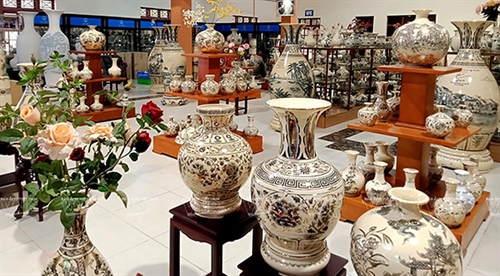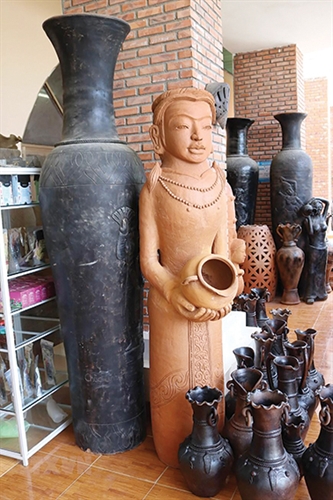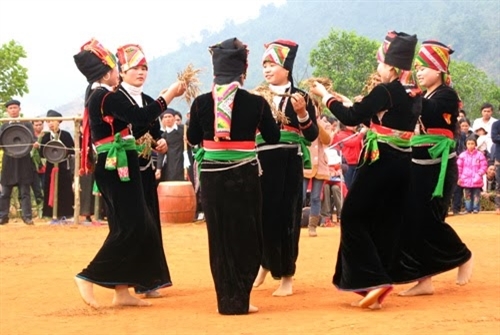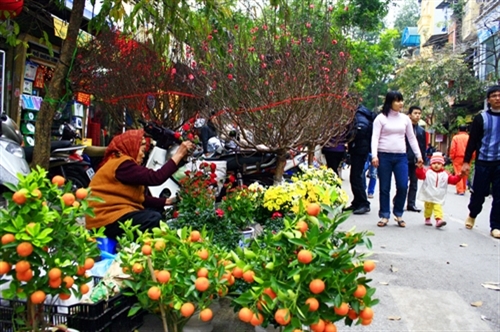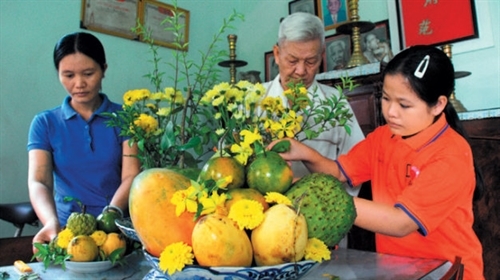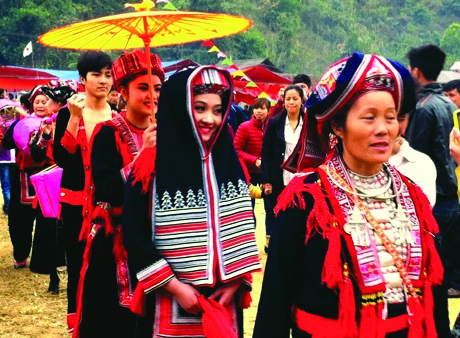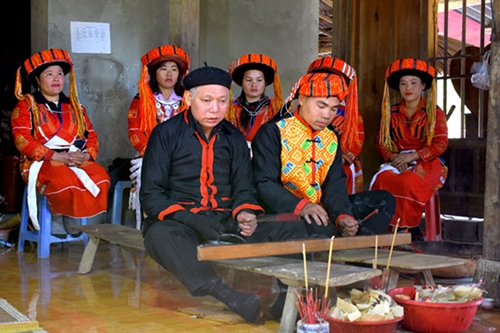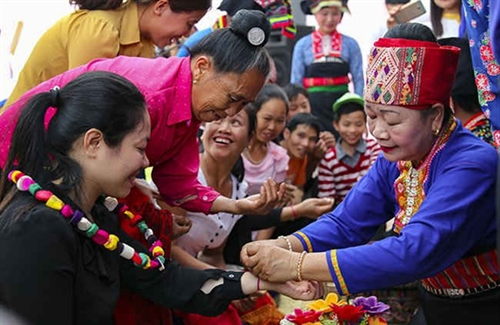Located in the Red River delta province of Bac Ninh and about 60 kilometers to the northeast of the capital city, Phu Lang pottery village in the same name commune of Que Vo district is a worth-visiting destination for its famous eel skin or cockroach glazed lusterware, decorative pattern of tu linh (four sacred mythical creatures - dragon, kylin, phoenix and tortoise) and pottery wall art.
 |
| Vivid decorative patterns on Phu Lang pottery products__Photo: Thanh Thuong/VNA |
Phu Lang villagers believe that the pottery ancestor was Luu Phong Tu, a man who was assigned by the Ly dynasty as an envoy to China where he learnt the pottery craft and passed down to residents on the Luc Dau river banks and later to local people in Van Kiep area in Hai Duong province. In the Tran dynasty in early 13th century, it was introduced to Phu Lang Trung, now Phu Lang, and perished a century later. At present, a number of Phu Lang pottery products dating from the 17th to 19th centuries are on display at the Vietnam National Museum of History.
Products of Phu Lang pottery village are very plentiful, ranging from everyday items, ceremonial objects and decorative items to pottery wall pieces. Like other traditional pottery villages, Phu Lang’s methods of working pottery products are much the same. It is relatively simple to describe the process.
Earthenware item-making starts with basic materials: clay and glaze. While Bo Bat lusterware in Ninh Binh province is made of white clay and Tho Ha pottery products in Bac Giang province are made of green clay, Phu Lang pottery and porcelain products are made of red clay. The clay is brought from Thong Vat and Cung Khiem areas in neighboring Bac Giang province to the village via Cau river. The clay is taken out to dry until its color fades and then dipped into water.
 |
| Shaping pottery items__Photo: Thanh Thuong/VNA |
Another material needed for making lusterware is glaze. The making of glaze is somehow a secret handed down from generation to generation in the village. To make this unique glaze, the potters have to mix the ash of four species of trees - tali, iron-wood, mukulungu and apitong, with limestone, crushed gravel, alluvial mud and water in a certain proportion. The mixture is then left dry, broken into tiny pieces to dissolve into water and filtered through a sieve. It finally becomes a viscous liquid with honey color. Once applied with this unique glaze, greenware will have a milky white color after they are placed to dry in the sun.
Phu Lang potters use hand-operated wheel to shape crockery and decorative items and wooden or pottery molds to shape ceremonial objects. To shape a clay piece, a lump of clay will be carefully wedged to remove air bubbles and reach its correct consistency. Once greenware come off the wheel, they need to sit and dry until they become leather-hard. Unwanted marks or minor defects will be removed at this stage.
 |
| Greenware carefully embossed__Photo: Thanh Thuong/VNA |
When greenware remain in the stage of soft leather-hard, they go off for decorating and glazin g. Phu Lang potters impress patterns on pottery items’ body, called embossing. They also use brushes to draw decorative patterns on the products. Furthermore, they can apply the unique glaze and place them out to dry in the sun.
After dried, pottery products are piled up to put into the kiln. A wood kiln firing usually takes three days and three nights from start to finish. The temperature inside the kiln is gradually increased to the highest level of 1,000 degrees Celsius on the second day and reduced slowly when the pottery is heated to maturity.
 |
| Decorated and embossed pottery items placed to dry in the sun__Photo: Thanh Thuong/VNA |
In the meantime, the making of vivid pottery wall pictures that require skills and carefulness must go through various steps, ranging from rolling clay slabs, shaping, cutting, drying and firing to joining pottery pictures. For these pictures, it is a must to use gas-fired ovens to bake these products in order to prevent common defects on the items.-
